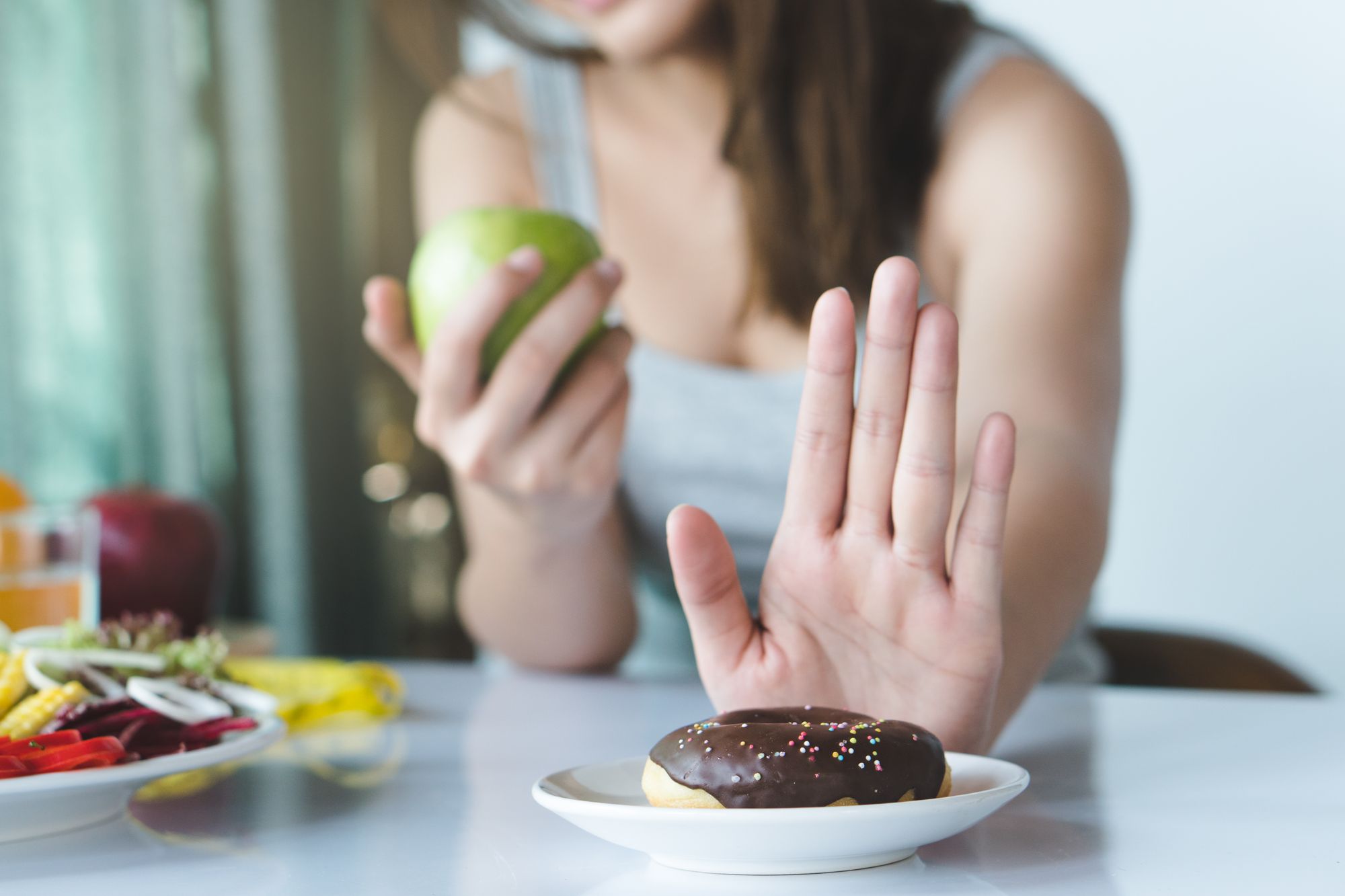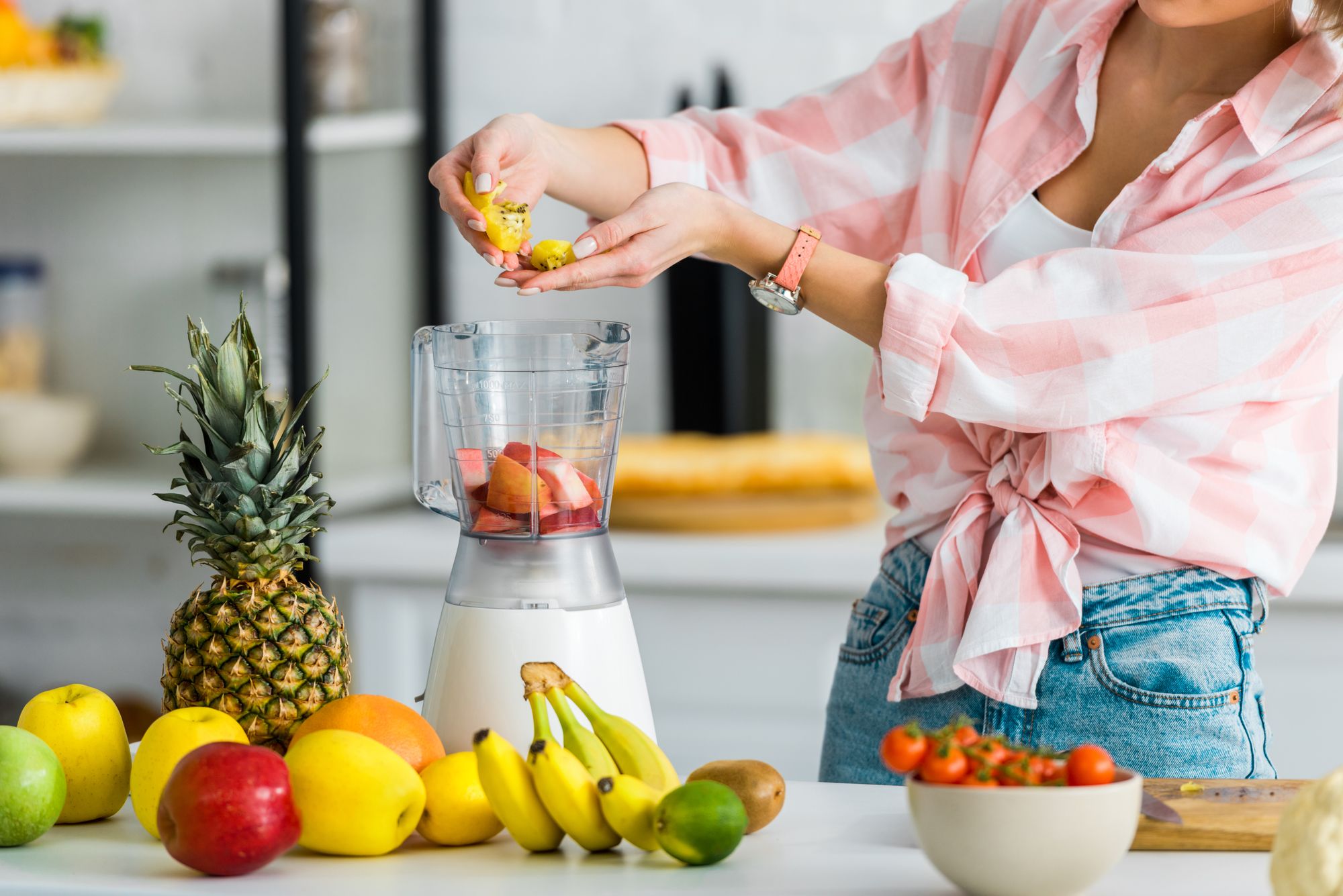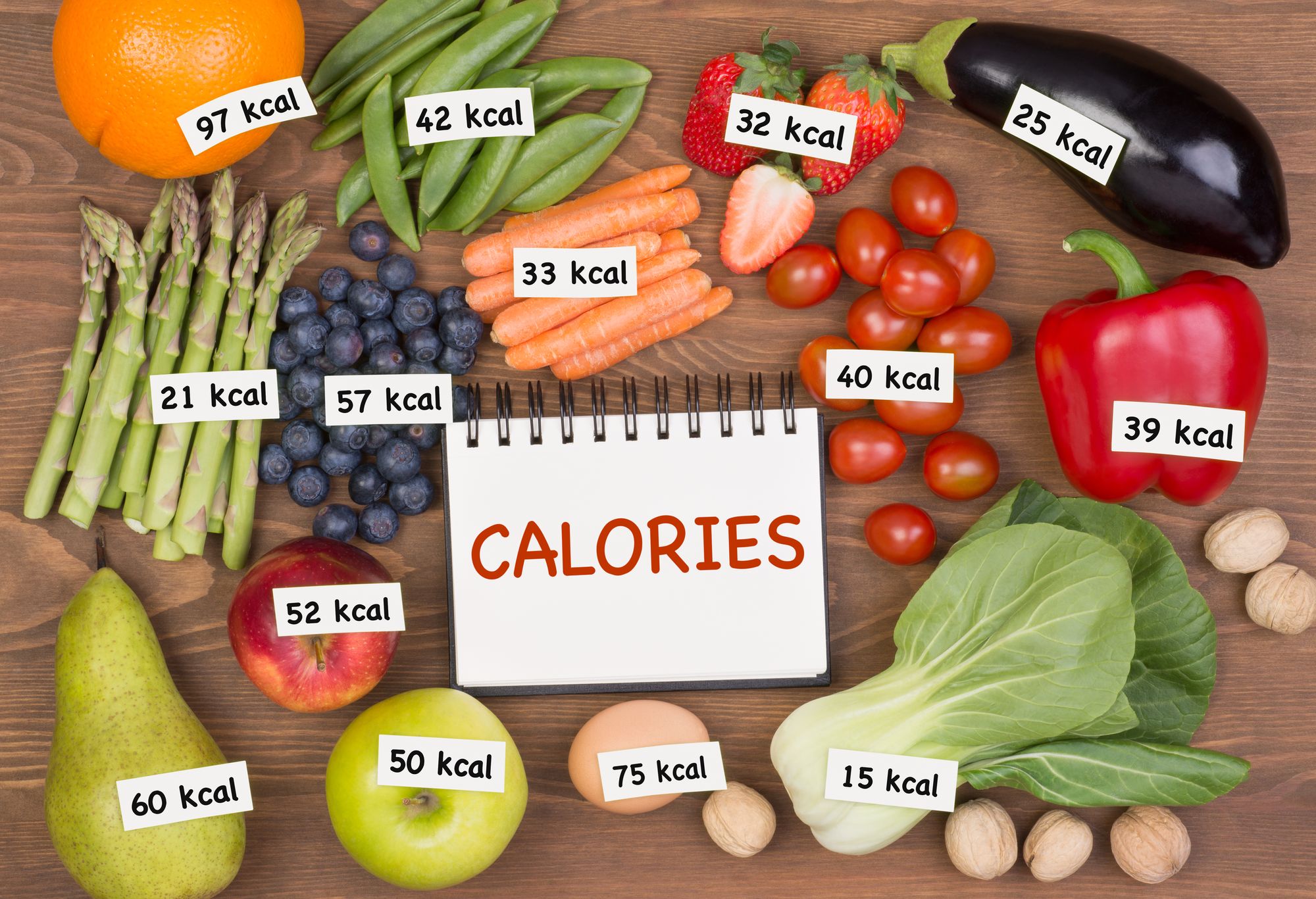Sweet treats like frosted donuts, warm chocolate chip cookies, and chocolate fudge ice cream are hard to resist, but they can set back your weight loss journey and harm your health. While whole foods with natural sugar, such as fruit, are part of a balanced diet, too much added sugar can be harmful.
According to Harvard Health Publishing, added sugar is the type that food companies add to enhance flavor and extend shelf life. Many people are unaware of how much added sugar they consume. "The crazy excess of added sugar in our food supply (and your diet) is the number one health problem in the country right now," says Laura Burak, MS, RD, founder of GetNaked® Nutrition and author of Slim Down with Smoothies, speaking to Eat This, Not That!
Unfortunately, food companies disguise sugar with names like syrups, brown sugar, dextrose, glucose, and sucanat. Burak shares sneaky ways to cut back on sugar and lose weight. Sugar can hide in unexpected places, beyond cakes and baked goods.
Keep reading to learn Burak's tips for reducing your sugar intake.
1) Replace Added Sugar with Nutrient-Rich Foods That Contain Natural Sugar

According to Laura Burak, MS, RD, founder of GetNaked® Nutrition and author of Slim Down with Smoothies, swapping foods that contain added sugar with those that are rich in natural sugar, nutrients, and antioxidants is a smart move. She recommends reaching for fresh fruits, rather than cookies, candy, and ice cream.
As noted earlier, incorporating whole foods with natural sugar, such as fruit, is healthy. According to the American Heart Association, any food that includes fruit or milk will contain some amount of natural sugars.
2) Opt for Healthier Alternatives with a Touch of Sweetness

If you're looking to add some sweetness to your meals or snacks in a healthy way, Laura Burak, MS, RD, founder of GetNaked® Nutrition and author of Slim Down with Smoothies, has some suggestions. Burak recommends adding cocoa powder or cinnamon to your coffee, using vanilla extract and fruit in your homemade smoothies, or spreading your favorite nut butter on dates for a delicious treat.
Burak suggests experimenting with foods that have natural hints of sweetness. Over time, your taste buds will adjust, and you may find that you no longer crave super sweet flavors. "It's pretty cool when that happens," she says.
3) Gradually Reduce Your Intake of Sweetened Beverages

Laura Burak, MS, RD, founder of GetNaked® Nutrition and author of Slim Down with Smoothies, suggests gradually reducing your consumption of sweetened beverages. Drinks like sports drinks, soda, coffee shop beverages, and even juice can be packed with added sugars.
"It's surprising how much sugar can be in just one drink, so start by cutting back on these types of drinks and opt for mostly water, club soda, unsweetened tea, and coffee," Burak advises.
By weaning yourself off sweetened beverages, you can reduce your sugar intake and support your weight loss efforts.
4) Don't Be Fooled by 'Healthy-Sounding Words' on Food Labels

Laura Burak, MS, RD, founder of GetNaked® Nutrition and author of Slim Down with Smoothies, warns that added sugar can hide in surprising places in your food. She emphasizes the importance of checking the ingredients on food packaging, regardless of any "healthy-sounding words" on the front of the box. Look out for sneaky words that may indicate added sugars and choose brands that contain little to no added sugar.
The American Heart Association lists several terms that can mean added sugar on food labels, including brown sugar, honey, raw sugar, molasses, syrup, fruit juice concentrates, corn sweetener, invert sugar, and malt sugar. Being aware of these alternative names for added sugar can help you make informed decisions about the food you eat.
5) Make Calorie Comparisons

According to Laura Burak, MS, RD, founder of GetNaked® Nutrition and author of Slim Down with Smoothies, it's important to focus on consuming high-quality foods. She clarifies that she's not referring to sugary treats like gummy bears.
To illustrate the point, consider two different 500-calorie meals. One option is 500 calories worth of frosted donuts, while the other is a nutrient-dense salad with eggs, avocado, seeds, and olive oil. These two meals are not equal, and your body will process them differently, Burak notes.
"Donuts are primarily made up of added sugar and saturated fat, lacking satiating and blood-stabilizing protein. That's why one donut can quickly turn into three," Burak explains. "Eating this kind of food can increase blood sugar levels, but it won't leave you feeling full or satisfied, leading to hunger and cravings."

